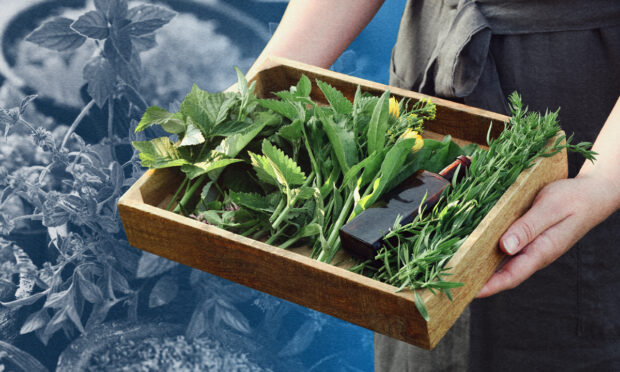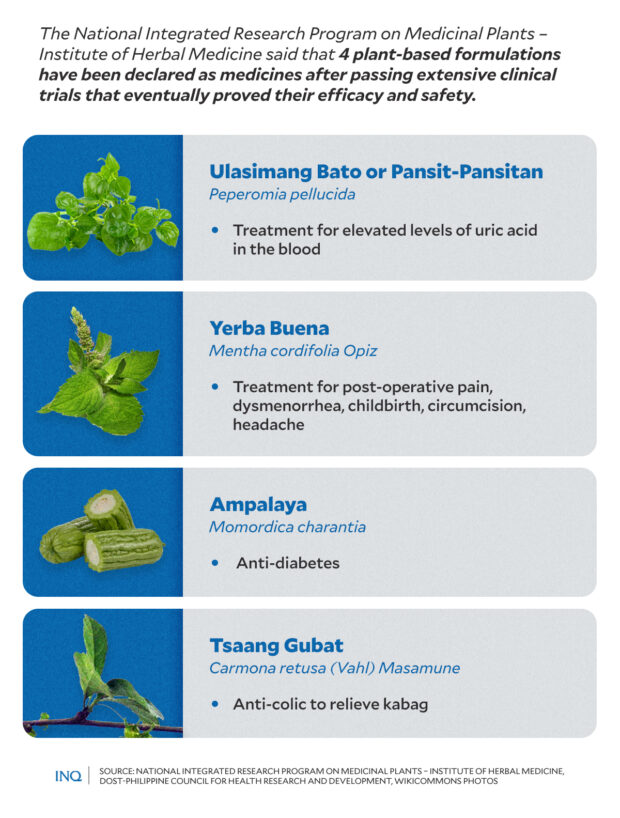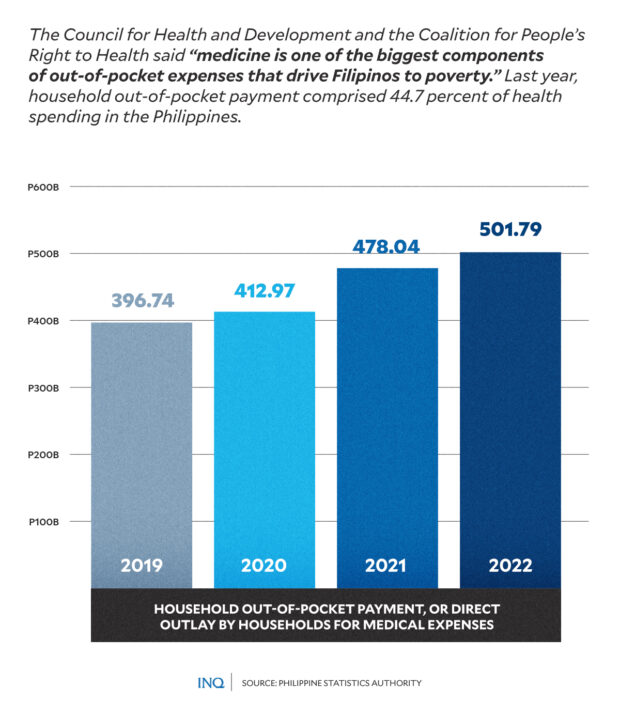4 PH herbs for gout, pain relief pass clinical trials
MANILA, Philippines — Back in the 1970s, the government had a dream of providing cheap medicines for Filipinos, especially the poor, who are often left out of health care.
Dr. Cecilia Lazarte, director of the Institute of Herbal Medicine of UP Manila’s National Institutes of Health, stressed in 2020 the importance of research on the development of safe, effective, and low-cost medicines from plant extracts to address the problems hounding the Philippine health care system.
This was the reason that the recognition of plant-based formulations as medicines has always been considered a breakthrough and, according to the National Integrated Research Program on Medicinal Plants – Institute of Herbal Medicine (NIRPROMP – NIH), new medicines have been recently derived from ulasimang bato, yerba buena, tsaang gubat, and ampalaya, a sugar-lowering agent.
According to a report by the Philippine Information Agency on the Philippine Pharma and Healthcare Expo in Pasay City that was held last month, through the efforts of experts led by Dr. Nelia Maramba from the NIRPROMP – NIH, four plant-based formulations passed all the pre-clinical trials required by the Food and Drug Administration (FDA) for human consumption.
Innate healers
Lazarte said in a column for Acta Medica Philippina that access to medicines and care from doctors and other health care professionals is especially challenging for geographically isolated and disadvantaged areas where people are physically or economically inaccessible.
Article continues after this advertisementBack in 1997, to recognize the value of traditional medicine and alternative health care, which Lazarte said has been well-accepted in rural areas, Republic Act No. 8423, or the Traditional and Alternative Medicine Act, was signed by then President Fidel Ramos.
Article continues after this advertisementREAD: ‘Healing plants’ in PH offer alternative to prohibitive COVID meds
This, as based on data cited by the law, the Philippines has over 2,000 plants that can be used medically after extensive research and development. As stated in an article by Dapar M. et al and published by the UK-based science publication BioMed Central in 2020, 120 plants have already been “scientifically validated for safety and efficacy.”
Scientific breakthrough
According to data from the Philippine Council for Health Research and Development (PCHRD) of the Department of Science and Technology (DOST), ulasimang bato has long been used in the Philippines for its analgesic, anti-inflammatory, and anti-hyperuricemic properties.
It said that through researchers led by Maramba, a medicine has been developed from the extracts of what is scientifically called Peperomia pellucida to treat hyperuricemia, or the elevated level of uric acid in the blood that causes gout, the inflammation and arthritis of joints.
Likewise, an analgesic has been derived from yerba buena, or Mentha cordifolia Opiz, to relieve post-operative pain, especially after circumcision, dental extractions, and child birth. All thanks to the plant’s leaves that contain a compound called menthalactone, the plant-based formulation has been said to take effect within 30 minutes.
READ: PH’s medicinal plants not quaint, exotic
READ: 99 percent of Filipinos can’t afford prescription drugs, says survey
READ: As Filipinos empty pockets for health care, groups say waste of P7.4B gov’t meds is unconscionable
Tsaang gubat, or Carmona retusa (Vahl) Masamune, meanwhile, can help relieve pain in the abdomen. It contains alpha-amyrin, beta-amyrin, and baurenol which have shown analgesic activity, anti-diarrheal and anti-spasmodic activity. The medicine derived has been clinically proven to be effective and safe in relieving the pain from gastrointestinal colic and biliary colic, taking effect within 30 minutes to 1.5 hours.
Commercialization
As the DOST – PCHRD said, the tablet formulation for ulasimang bato and tsaang gubat have already been granted a patent, while the one derived from yerba buena is ready for commercialization, with the proponents already looking for companies willing to produce, manufacture and distribute the product.
It was pointed out by Lazarte that “developing more herbal medicines needed for primary health care would decrease our dependence on the importation of medicines, and increase the accessibility of drugs even in geographically isolated areas.”
This, as she said that the cost of branded drugs in the Philippines is 22 times more than international reference prices, while generic drugs are four times more expensive, and despite the Cheaper Medicines Act of 2008, as well as the Generics Act of 1988, “those in the lower-income brackets still cannot afford maintenance medicines for hypertension and diabetes, as well as antibiotics.”
Based on a 2019 poll by Pulse Asia, 99 percent of Filipinos are prevented from getting the medicines they need “because they are expensive.”
It was previously pointed out by the Council for Health and Development and the Coalition for People’s Right to Health that “medicine is one of the biggest components of out-of-pocket expenses that drive Filipinos to poverty.” Last year, household out-of-pocket payment comprised 44.7 percent of health spending in the Philippines.


